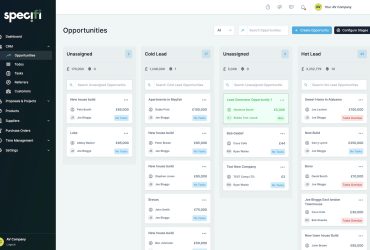The most common conversation that I have with industry partners revolves around back to office strategies. Many will begrudge the resistance employees show being ordered back to the office, while others say that they are experimenting with some kind of back to office hybrid model to accommodate employees with the most popular being working two days in the office and three days from home.

While it presents itself as being funny, the majority of business owners that I speak to secretly hope that the economy stays soft, for it may switch the balance of power back to the company from the employee who has had it “too good for too long” with an over-heated job market that lets the employee dictate pretty much everything. As one colleague mused, “when you have to pay a cashier $23 bucks an hour to take a job at Tim Hortons, something is wrong.” In other words bribing staff with ridiculous perks (we are talking about you Silicon Valley) needs a rethink.
Covid-19 and two years of working from home has brought to the forefront where, when and for how long an employee should work and whether our traditional definition of an eight-hour workday over five days a week, needs some adjusting.
In 1817, Welsh activist Robert Owen who criticized the standard 10-to-16-hour work days that drove the industrial revolution, advocated for shorter workdays with his slogan “eight hours labour, eight hours recreation, eight hours rest.”

Owen’s catchy slogan from over 200 years ago would still command big bucks had it been coined by an ad agency today, yet Owen’s call for change created no change until 100 years later, when the Ford Motor Company adopted an eight hour work day as a means of keeping production going 24 hours a day without putting unnecessary demands on individual members of staff. Breaking a day into eight-hour segments allowed Ford to run factories 24 hours per day broken into three shifts. Pretty smart and that’s why you work eight hours a day in 2022.
Around the same time that Ford was revolutionizing the work day, employment was broken into blue collar and white collar categories. A factory worker (blue) putting windshields on a car could very well work eight hours as the cars just kept rolling down the line, but what about office workers (white) where their performance measurements are not so easily defined. What is the ideal shift they should work?
Stanford economics professor John Pencavel found that productivity per hour declines sharply when a person works more than 50 hours a week. After 55 hours, productivity drops so much that putting in any more hours becomes pointless. And, while Elon Musk has famously advocated for an 80 hour work week, Pencavel’s findings show that those who work up to 70 hours a week are only getting the same amount of work done as those who put in 55 hours.

According to the Bureau of Labor Statistics, the average American works 8.8 hours every day. Yet a study by UK company vouchercloud of nearly 2,000 full-time office workers revealed that most people aren’t working for most of the time they’re at work. The study concluded that in a standard 8-hour work day the majority of employess are productive for 2 hours and 23 minutes.
The most popular unproductive activities listed were:
Reading news websites–1 hour, 5 minutes
Checking social media–44 minutes
Discussing non-work-related things with co-workers–40 minutes
Searching for new jobs–26 minutes
Taking smoke breaks–23 minutes
Making calls to partners or friends–18 minutes
Making hot drinks–17 minutes
Texting or instant messaging–14 minutes
Eating snacks–8 minutes
Making food in office–7 minutes
In Iceland researchers conducted a study where 2500 workers (less than 1% of the Icelandic workforce) were placed on a five-hour workday but with no decrease in pay. The study concluded that a condensed workday had no negative impact on productivity while improving employee well-being and quality of life.
We are not fully out of the woods with Covid so companies can justify a slow policy implementation on how the workday will look post-Covid. Finding a harmonious balance now that the world has shown it can work from home (or anywhere) may be trickier than we realize.









